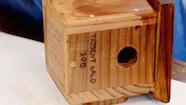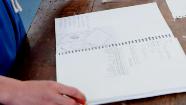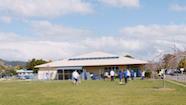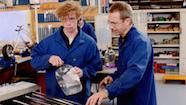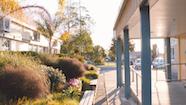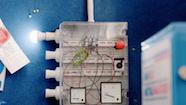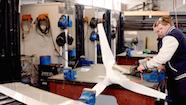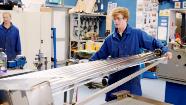A great story prompted students to get behind a community project.
Manufacturing nesting boxes: Halo project
Transcript
Bridget Palmer: The Halo project, I guess, came about from a realisation throughout all my different roles that there was a gap in Whakatāne between community groups, they weren’t networking as well as they could. There was an opportunity for schools and businesses to be involved in a region-wide and a town or community-wide project. I guess, within the last six or seven months, Halo Whakatāne has been born.
So the vision for Halo Whakatāne is to provide an environment in Whakatāne where tieke can live and thrive in the heart of our community. The tieke alighted on the Mātaatua waka and guided the waka through the fog. As they came towards Whakatāne, they stopped at Moutohora or Whale Island, and then moved on to the heads in Whakatāne, or Whakatāne River where the waka stopped.
Nigel Rowland: I like teaching things with stories and this is a great story and it was really easy to sell to the students and they got hooked in in the first lesson and I could just tell that they were really excited about it.
I really enjoy the outdoors and I enjoy wood tech and combining the two is really good. So at the beginning of the year, we had a simple model that we had to make and they had to put some nails in and put some screws in and cut it to size. Everyone in the class did that and I was able to assess their skill level, and then give them the right type of job in our production line.
We set up the whole room as like a factory and every desk had a different job and we put our work force in the right place and we had different skills going on and the end product was a finished box that got checked thoroughly and we were really pleased with our outcome.
One of the most difficult things with multi-unit manufacturing is the design of your room and what job is done where. That took students quite a long time to grasp and design. I didn’t want the people who were going to do most of the cutting on the bandsaw to be on the wrong side of the workshop because there would be a lot of movement. So to cut down on the movement of students, we had to design the room so it was next to the machine they were using and try and spread it out.
There’s normally quite a lot of waste with prototyping and I think what the manufacturing process does, is it cuts down on waste and everyone becomes more efficient. So I’m always looking for local timber, I don’t want to get my timber from abroad. Finding out that Edgecumbe were making beehives out of thermally modified timber, radiata pine, and it’s the equivalent of H3 so it can be used outside and in ground contact. It’s just a really chemical free alternative. It’s also a really good material to study so we could tie in 1.6 and get an external.
To make a box, there’s lots of different ways and lots of ways to clamp it together, different sized holes, pilot holes you had to drill and just different ways to get the same result and so students explored those. We were always noting down whenever we had failures and making a little note of all our successes and I think every student had their own way of trialling and making their part of the box and we all learnt from each other and it was good to see students coming up with these innovative ways of preventing the wood from splintering and cracking and keeping it square. We recorded it all on a flow chart and they used that process then to do their own box which they were going to take home and put into their back garden.
Student: Yeah I’ve put mine up, mine’s up on a Pohutukawa tree out the front.
Nigel: You’ve picked a good spot because in the heat of the day, the sun’s not going to get on there.
Student: Yeah, it looks really nice as well. I thought it was good because we’re getting straight into practical work and getting credits right away, for school work, as well as helping the environment.
Related videos
Values: Halo project (02:23)
Year 11 students deepened curriculum understandings through helping their community.
Key Competencies: Halo Project (02:44)
This technology project has rich links to the key competencies.
Renewable energy: Solar panels (03:46)
Students developed a brief for their project based on an authentic context.
Renewable energy: Solar panels for special education (04:30)
Year 13 students embraced an opportunity to work alongside the special education centre.
Renewable energy: Teaching programme (05:07)
Dave Dobbin inspires his year 13 students to learn about renewable energy.
Renewable energy: Principal and community support (04:35)
Input from the community helped this school project to grow.
Renewable energy: A model micro-hydro system (04:39)
Year 13 students explain their water powered turbine.
Renewable energy: Wind turbine (04:08)
A year 13 student and his teacher discuss their energy-saving project.
Renewable energy: Solar water heating (04:20)
Year 13 students discuss their solar water heating project.

